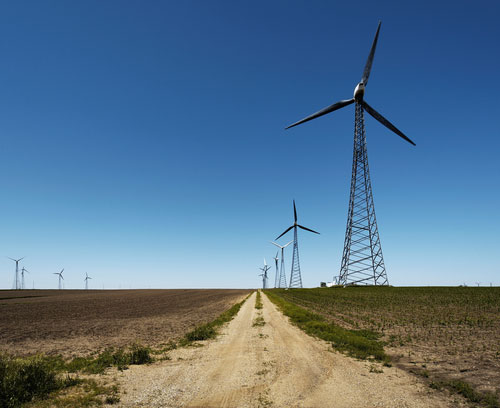How can companies develop their corporate reputation (CSR) strategy? Yes, they can pay fair wages, bet on gender diversity, work with responsible suppliers, offer a flexible working environment, organize volunteering activities, become paperless or develop conscious leadership practices. But there’s something else they can proactively do, at least until regulations come – offsetting their carbon footprint and start moving in the carbon market.
The Carbon Market: An Opportunity For Businesses To Shine
As we’ve discussed in our carbon pricing article there are two main ways governments can control the carbon emissions of industries. One has to do with taxing carbon, whether directly (imposing fines when a top limit isn’t respected) or indirectly by subsidizing renewables or increasing taxes on fossil fuels.
The other has to do with a cap-and-trade system, where companies can exchange their rights to pollute – and trade carbon credits in specific markets. So if one company only has permits to pollute 10ton/co2 and pollutes only 8ton/co2, it can sell its 2 extra permits some other business polluting too much, or save it more the next year. The EU is developing its own emissions trading system (ETS). So is China and a few US states, among others. However, there’s still a long way to go and many places and companies have no obligations to responsibly manage their greenhouse gas (GHG) emissions.
Yes, many businesses don’t need to worry about their carbon footprints as they’re not under any carbon policies yet. But shouldn’t they still do it? Or better, shouldn’t that be a stronger reason for them to do it? I mean, firefighters save people from burning buildings, it’s nice, but that’s still their job. However, if an ordinary citizen passing by saves a 6-year-old blonde girl from a 3rd floor in flames, when it wasn’t his job and he had no obligation of doing so – that’s pretty heroic no? So there’s a high reputational opportunity here for companies to grab.
- Related:
How Can Businesses Manage Their Carbon Impact
Organizations can start by finding out ways of doing a good job by improving their carbon emissions locally. This can go all the way from turning lights off when there’s daylight or changing to LED or closing windows during summertime to use less energy from the aircon. Printing less and using only paper from sustainably managed forests where the trees taken down are replaced with new ones, can be something too.
Optimizing distribution networks so that the route is the shortest and that vehicles are using their full capacity is also an option, as well as betting on renewable energies like solar panels or using less polluting pesticides on agricultural sites. But what if industries already did the best they could and they’re still emitting too much CO2? Well, that’s exactly what carbon offsets are here for.
- Related
How Businesses Can Offset Their (High) Carbon Emissions

The clean development mechanism (CDM) is one of the flexible mechanisms of measuring carbon exchanges implemented after the Kyoto protocol was ratified. Simply put, it allows emission-reduction projects taking place in developing countries to earn certified emission reduction credits. From renewable energies and energy efficiency to reforestation or methane reduction, the CDM comprehends many projects able to create carbon offsets.
In this way, if a business has a legal responsibility with its carbon footprint, instead of stopping its polluting practices, it can pay money for green initiatives, such as planting trees or investing in wind-power projects, that will make it up for this polluting, somewhere else in the world. The same is true for companies wanting to offset their emissions, even though they aren’t legally obliged to do so.
So in order to make sure these projects have indeed the potential to offset carbon emissions, there are third-party companies working as independent certifiers and converting them to carbon credits. By doing so, carbon offsetting is able to match the carbon damage created in one place with the carbon repair done somewhere else and to foster projects in developing countries that otherwise couldn’t have happened. However, not all is a bed of roses.
- Related:
Criticisms To Carbon Offsetting Projects

Some people question the ethical perspective behind carbon offsets. Are businesses simply avoiding to solve the real issue, i.e., the damage they first causing? It makes it ok to do wrong as long as pay for this harm, without truly undoing it. Besides, another critic has to do with the difficulty to quantify the impacts of some carbon offsetting initiatives. Wouldn’t that village development via solar energy and sustainable construction happen anyway without this company’s investment?
So is it really offsetting this impact? Are sure can we be that the trees planted, that will take years to grow, wouldn’t have been planted otherwise or won’t be caught up in the middle of a fire? And how much will they grow and absorb exactly? What this means is that carbon offsets can be a good solution to help fight climate change as long as the offsets are truly beneficial and sponsor long-lasting environmental projects that wouldn’t have happened otherwise.
In the end, for businesses truly committed to neutralizing their carbon emissions, some carbon offsetting projects like the ones just mentioned might be doubtful when making meticulous comparisons. However, sponsoring carbon offsetting projects for the stake of it, for companies starting to develop their CSR and sustainable development strategies can be a good idea. Doing a materiality analysis involves different stakeholders and takes its time. Some changes, especially if they’re structural, can be very expensive and hard to plan. In this way, contributing to an NGO dedicated to reforestation, to microalgae investigations or to nuclear waste solving studies can be good ideas for businesses.
- Related:
Image credits to coal on Shutterstock, sunset on Shutterstock and wind on Shutterstock

